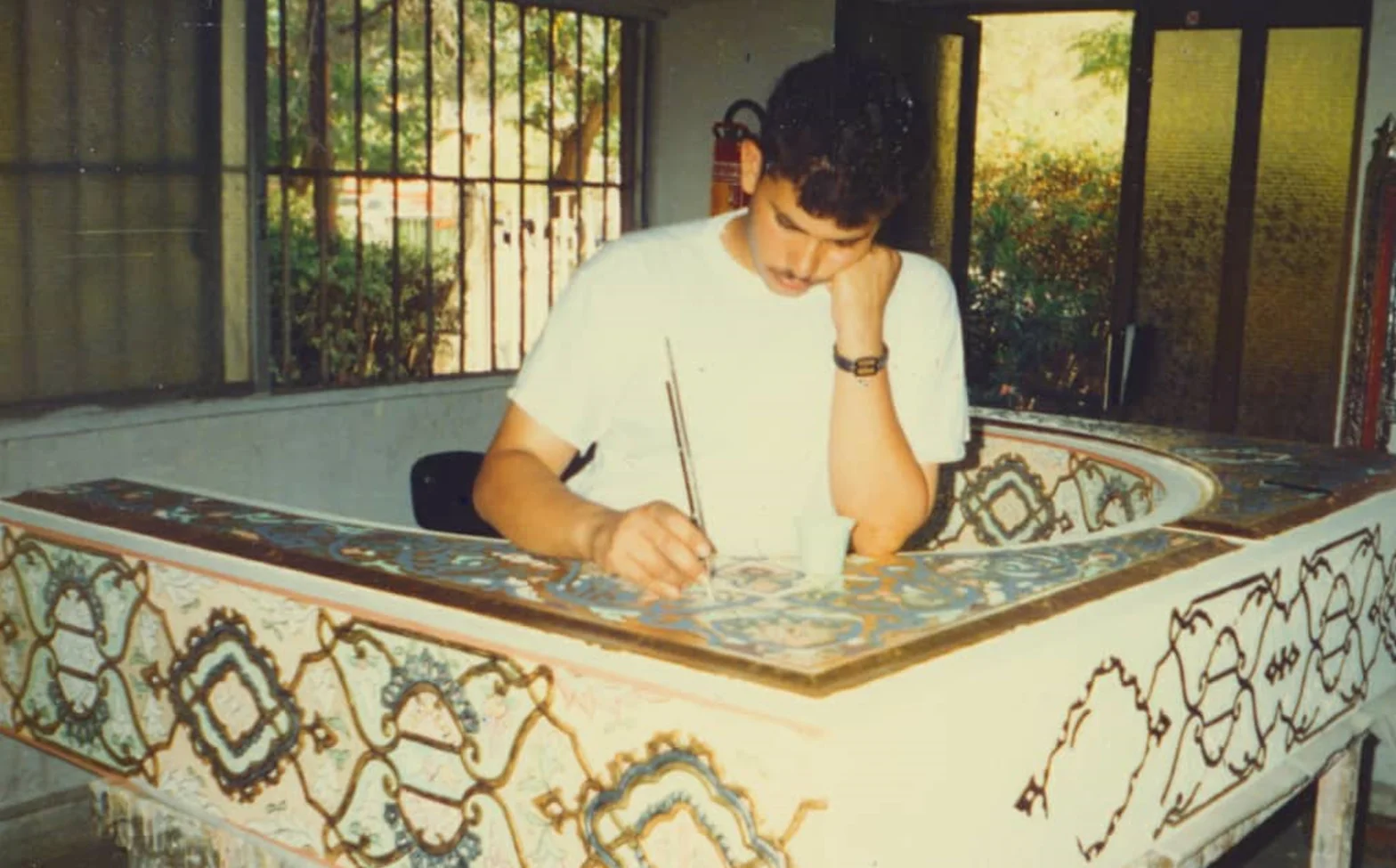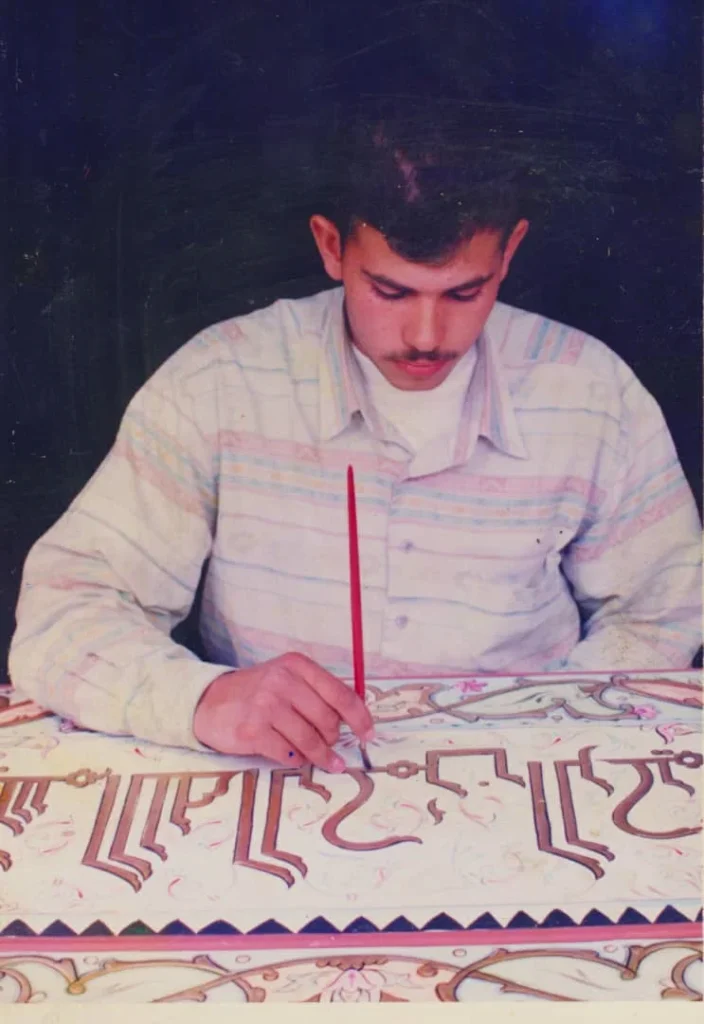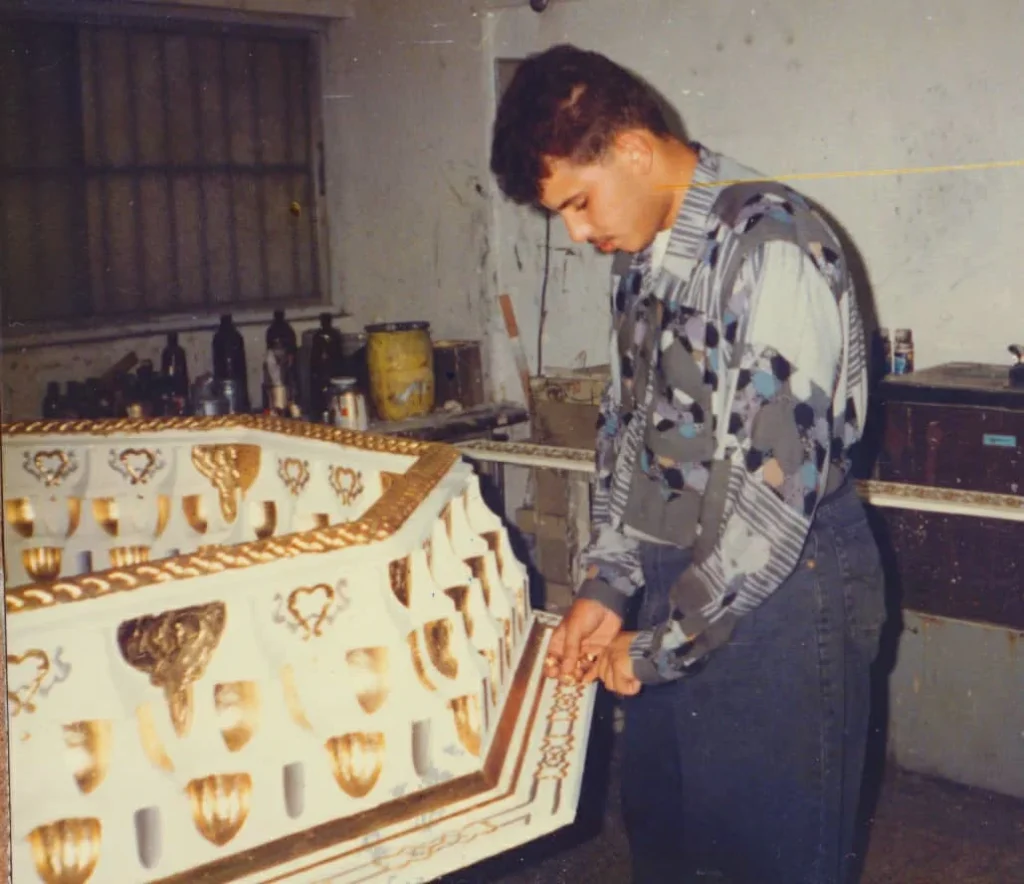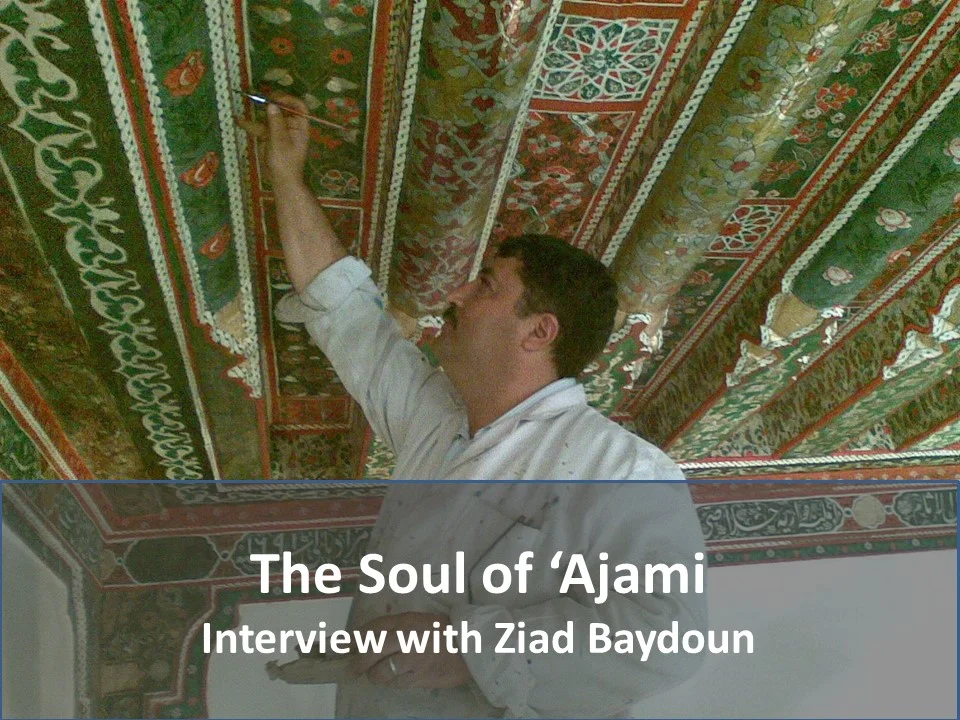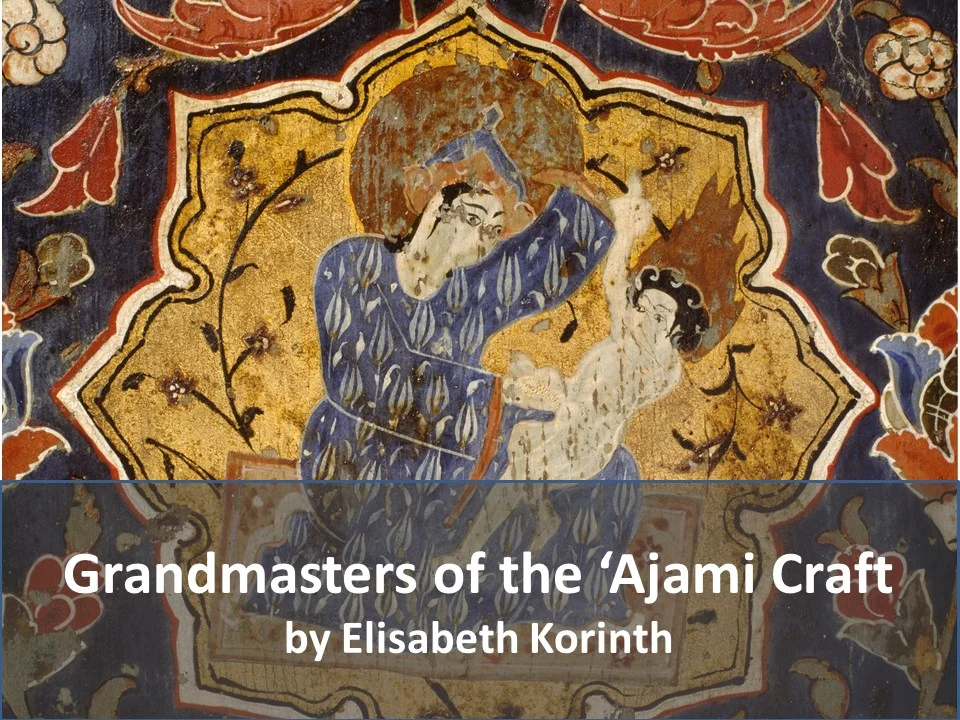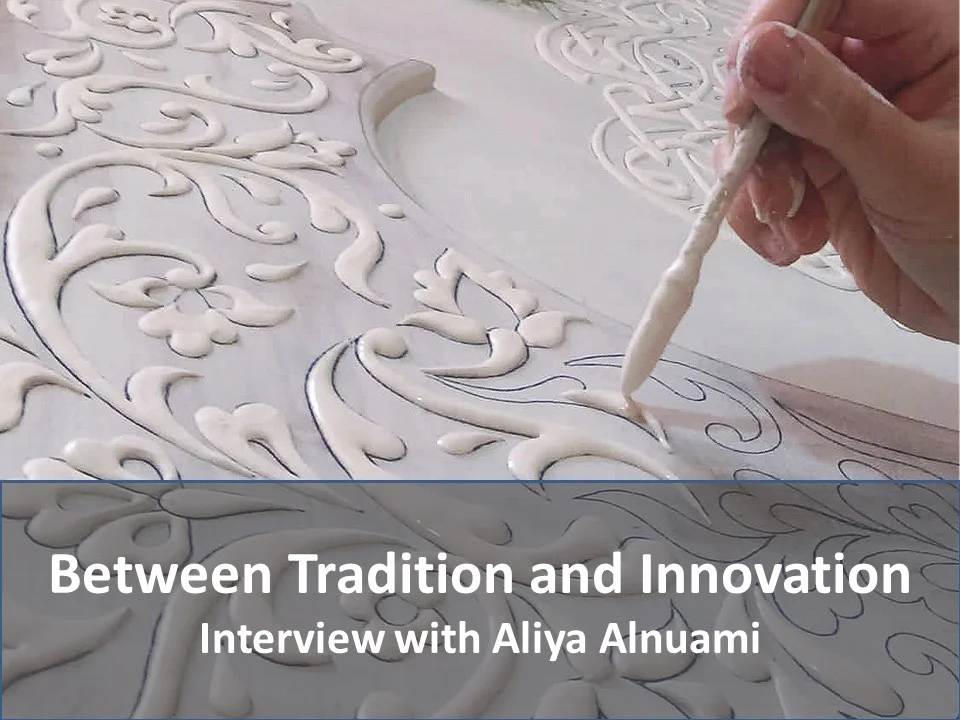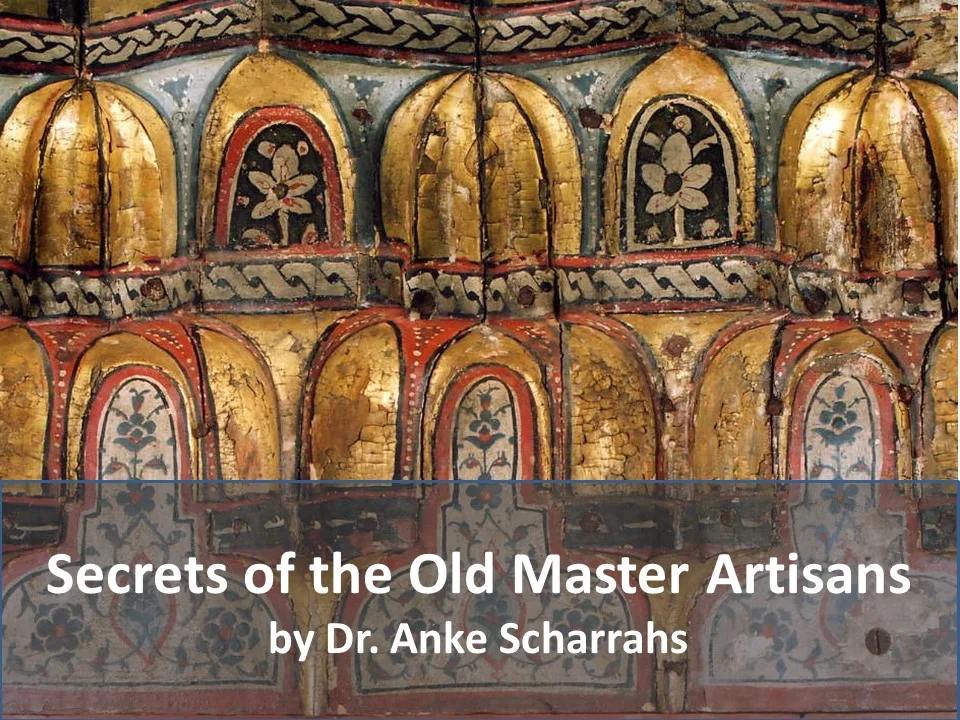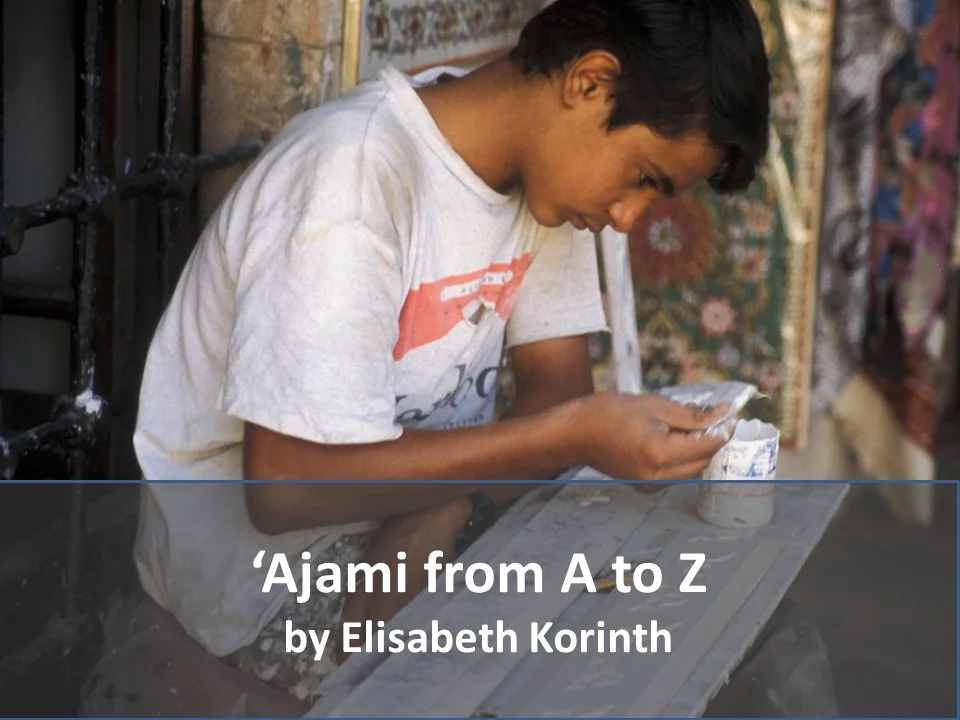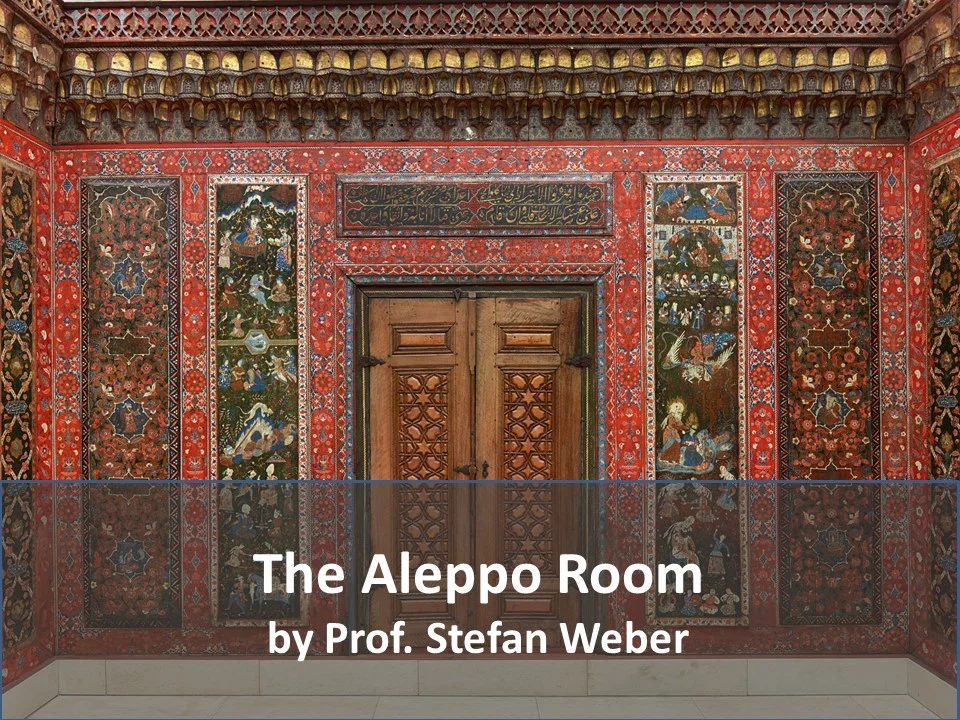by Dima Dayoub
Mohammad Haj Qab is an experienced craftsman from Damascus. He practices and conducts training workshops on ‘Ajami in his atelier. In this interview, he shares his personal experience in learning the craft and its secrets as well as the status of the ‘Ajami profession today in Damascus.
Mohammad, what is your personal story with the ‘Ajami craft? When did you start learning it?
It all started with my love for calligraphy when I was five years old. We had a small painting at home with an Arabic script on it. I was always trying to copy it before I even learned how to write. Our elementary school was an old traditional Arabic house with an open courtyard and decorated ceilings. Since I was young I used to look at calligraphy paintings and decorations wishing that one day I could do something similar. When I was in fourth grade, my parents searched for a place for me to work on my talent and spend my summer holiday doing something useful. But there was no institute to teach me calligraphy. However, I was living in the old city of Damascus in al-Aqiba, a popular area with old streets. Next to us, there used to be a workshop for someone who worked on ‘Ajami. I thought he was a calligrapher as I did not know the difference between calligraphy and ‘Ajami by then.
When I was 16, my mother asked this person to allow me to spend time after school at his shop. While working there I documented all stages of the work. Every Thursday I would ask to take the leftover colours back home with me to train myself more at using them during the weekend. I used to make simple drawings and decorations or write verses or Qur’anic words, and sign my name in large font on the work as a kind of signature. I kept on going to the workshop every summer until I became known in the professional field and people came from other workshops asking me to help them with their work. That allowed me to learn the working techniques of the various workshops in Damascus.
How is the present condition of the craft in Damascus? What kind of products are people buying?
‘Ajami is considered a luxury product. Due to the present situation in Syria, we have completely stopped working for three years. Most products are exported to Dubai and United Arab Emirates in general, sometimes also to Saudi Arabia, Qatar, Lebanon and Algeria. Mainly, these products are traditional Arabic seatings (Madhafa Arabia), parts of walls and ceilings, furniture and Qur’anic paintings.
There are not many craftsmen left who are currently working in ‘Ajami in Damascus now. We suffer from the fact that the new generation is not interested in learning this profession, because their interest is more focused on technology. In addition, the wages paid for training or working in this profession are rather little compared to other professions, as for sellers for example. Another issue is that we have no experience in restoration. We are not familiar with the processes of restorating ‘Ajami works and we use modern colours and techniques. We need training by experts, such as Dr. Anke Scharrahs, who studied the historical ‘Ajami works and the composition of the natural materials in the colours. This knowledge is essential to know how to produce these materials again.
In order to master the craft there are a variety of skills one need to practise. Some of them are being kept as business secrets such as the making of the relief paste. How did you learn these secrets?
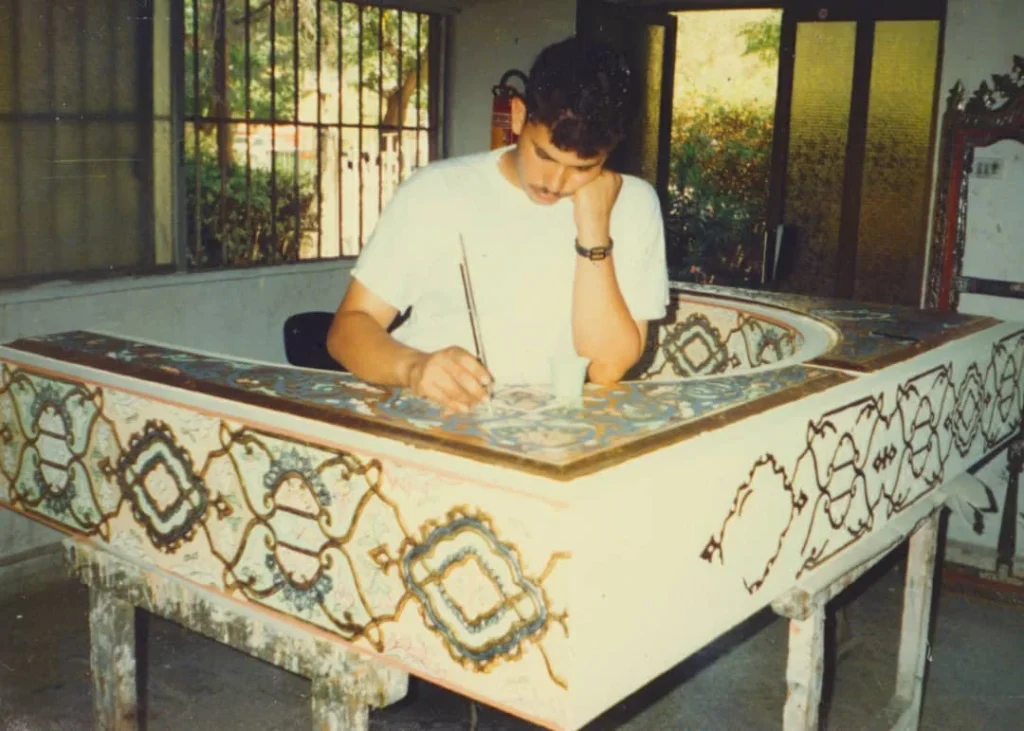
Mohammad Haj Qab is working on an arch for Syrian embassy in Bonn (Germany) in 1992 (© Mohammad Haj Qab, CC-BY-NC-ND)
Being trained from a young age I was able to learn and catch things quickly. I observed the method of holding the brush and how to move it until I mastered it. Then I started helping my master in the work although I was still young. As for the secrets of the profession, it is really hard to reveal them to others, especially since it took a long time and effort to collect them.
One example is working on the natural red glue paste. Red glue is an organic substance made of cowhide. It solidifies in the winter. On one occasion I saw one of the experts working with the same material without it solidifying. When I asked him to explain his secret to me he did not share it. One day I was talking to a friend about the subject who is a chemist. He explained that in order to prevent any substance from freezing, you have to add a little salt. So I went back home to try it and it worked. The red Arabic glue is the only local substance we use due to the presence of cattle in the country. When traveling abroad I take the red glue with us as it is usually not available in any other place.
Another example is the mystery of mixing acrylic colours, which are water-based, with oil colours. Water and oil are generally not miscible. However if you mix it with a little liquid soap it works. I discovered this when I was working on calligraphy and was trying to apply acrylic colour on oil paper.
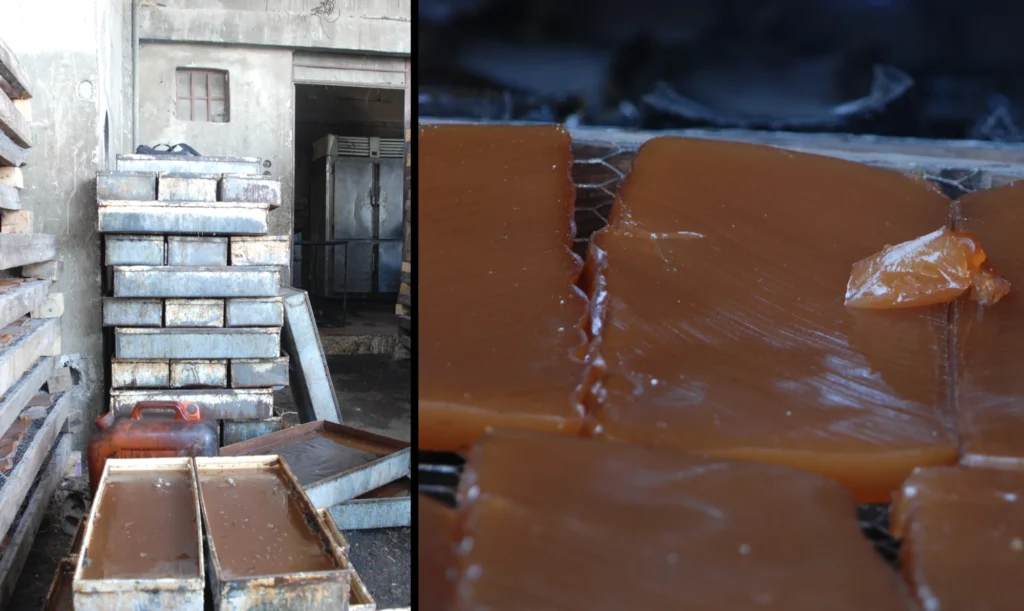
Traditional production of animal glue (© Mohammad Haj Qab, CC-BY-NC-ND)
Do you think the secrets of the craft should be shared with everyone?
Keeping the secrets of the profession is not really about selfishness. It took a long time to master and excel in this profession. Usually the old masters exchange the secrets of the profession among themselves but not among the newcomers. Due to the location of my atelier in old Damascus I receive requests to do a training workshop on ‘Ajami. I am happy to do that, but I will not give the specific details about the mixture of the relief paste for example. However, I can prepare the mixture for them free of charge. It is not only a secret of my profession, it is my life and it is not for sale.
Visit Mohammad Haj Qab on Facebook to get to know more about his work.
